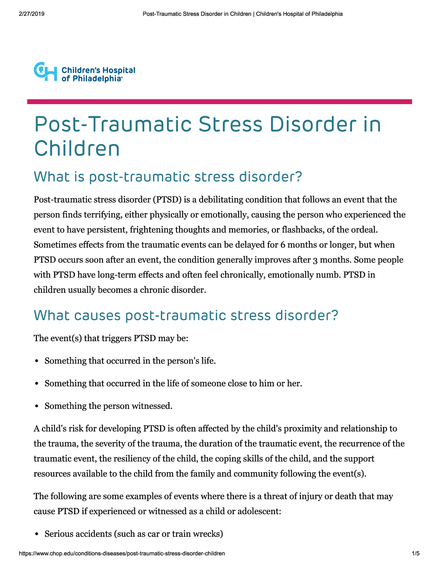Post-Traumatic Stress Disorder in Children (Web-page)
Accessed online February 2019 | Web-page discussing: What is post-traumatic stress disorder? What causes post-traumatic stress disorder? Who is affected by post-traumatic stress disorder? What are the symptoms <span class="attribute-to-highlight medbox">of</span> post-traumatic stress disorder? How is post-traumatic stress disorder diagnosed? Treatment for post-traumatic stress disorder. Prevention <span class="attribute-to-highlight medbox">of</span> post-traumatic stress disorder.


